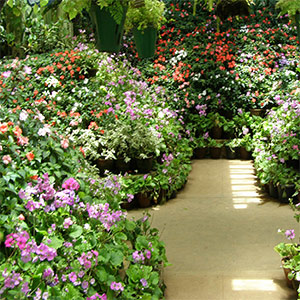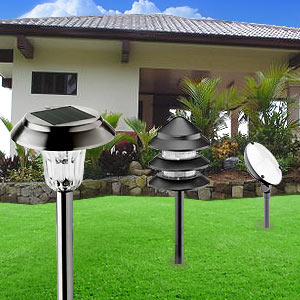Growing Succulents Indoors

As one of the most popular indoor plant types, Succulents enhance interior landscapes and make indoor spaces more beautiful. There come in a variety of shapes and sizes, but perhaps the most important reason for their popularity is that they require very little care by way of watering or pruning.
There are quite a few succulents that do not require a lot of light and this makes them the ideal choice for spaces devoid of natural light.
Are all indoor plants succulents ?
Not necessarily, as succulents are plants that have telltale fleshy leaves containing sap, which hold as much moisture as possible. This comes in handy especially in desert areas.
Succulents come in a wide variety of types, ranging from Aloe plants, to cacti, and even orchids, as well as ZZ plants and other common indoor variety belong to the succulent family.
Why the name succulent ?
The thick, fleshy, sap-filled leaves have given these plants the name succulent. The leaves allow them to hold and retain water more effectively than plants with thinner leaves.
Origin of succulents
Succulents arrived from dry arid areas of the desert regions. Succulents such as orchids that grow in rainfall regions tend to grow in branches or areas where the rain might not reach them so easily. Many succulents come from Africa and other areas that have long dry seasons where plants have evolved ways of more effectively and efficiently storing and using water.
When should succulents be planted ?
There is as such no planting season for succulents. They can be set up indoors any time of the year. However, outdoor succulents may be best planted during spring or summer. It would be ideal to plant succulents when the soil can be worked, as they are likely to be much better if planted in warmer months.
Soil for succulents
Even when buying succulents, most of them come planted in soil. Since the best thing about succulents is they require low maintenance, there is no reason to remove succulents from the container they came in and there is no reason to change out the soil.
In case of indoor succulents, they will have to be placed in pots suitable for the decor, but succulents tend to like coarse, rockier, sandier soil that are well drained. They thrive in inorganic soils like clay, sand or silt. They also have relatively shallow root systems and they do not need a lot of soil. As many succulents come in tiny pots or containers, there is no reason to feel bad for them as by nature they do quite well in small pots and containers.
Succulent features
While succulents have been around for a long time now, and have been used as office plants and in indoor gardens, it is in recent years that their popularity seems to have grown immensely. The reasons for this popularity are:
- They require low maintenance – very less watering and little or no pruning
- They come in a variety of sizes, shapes and colors, from very thin plants in small pots which can easily find a home on a desk.
- They attract fewer pests as they require very less watering, and constant watering being a prime reason for pests. The thick waxy leaves of the succulent are also difficult for pests to penetrate and feed through.
- As they can last a reasonably long time without water, they can sit on a truck for days, making transportation easier. And as most succulents are small, they have the advantage to be shipped in large numbers with lower freight cost for shippers. Some can even be packed in plastic bags and shipped across country. They can also be stored in greenhouses and sold as they last longer.
- As succulents, unlike other indoor plants, do not overgrow, they require less maintenance and hence convenient to grow.
- Since most succulents come from dry arid areas like deserts and other climes of similar temperament, most of them do well in full sun. Cacti, Jade plants and varieties of agave in particular do well in full sun. Even species of Orchid do well in high sunlight areas.
Where to buy succulents ?
These plants are so popular that they can be found just anywhere that sell plants from garden centers to large big box stores. There could even be some grocery stores that may have a selection of succulents. Interior landscape professionals can also advice on succulents.
What is distinctive about succulents?
These are a distinctive type of plant simply that they look different from other plants, and the one key difference is their leaves. The leaves of a succulent are thicker and when they are touched it feels a bit like rubber. Succulents also have shallow root systems and do not usually sit in very wet soil as too moist soil is bad for them. They also come in a wide variety of types, shapes and colors.
Succulent categories
Cacti do qualify as a succulent, simply because they do not require much water, do have thick green stems instead of leaves and a unique system of using what little water they get efficiently. Some of them also flower which makes them popular among plant enthusiasts to grow cacti as an indoor succulent.
Air plants are succulents and are similar enough with no root system and are often found growing on other plants or structures, such as branches of trees. They are handy and require no water at all. They absorb the little water and moisture they get and retain it.
Flowering succulents
Some succulents flower and make the home vibrant and beautiful. This category includes:
- Orchids, which flower into a wide variety of dazzling colors
- Cactus, many varieties of which bloom and produce colorful flowers
- Euphorbias, many types of which produce flowers
- Christmas cactus and Easter cactus, both as their name indicate, bloom at the time of the corresponding holiday.
There are quite a few other types of succulents that may produce blooms but their very nature is such that the blooms may not happen on a regular basis. They will not produce flowers every spring or summer for instance.
Taking care of succulents
Succulents are so popular because it is very easy to take care of them. They do not require much water or need to be repotted. They also grow slowly and need not be pruned regularly.
Succulents are built to store water and adapt to dry conditions where water is scarce. They have an adaptation to their environments, evolved over a period of time.
Perhaps the most important thing is to watch not to over-water succulents, which is a common tendency among succulent growers. There is a natural tendency to water succulents, just like other plants daily, but test the soil, see if it is dry and only then water succulents.
In case you water succulents kept in a saucer, it is important to remove it hold it under a tap and let the water drain. While using a watering can, check if it is sitting in water. If not, remove from the saucer and toss it away. When soil is dry, avoid light watering, and always water the plant thoroughly when needed and discard any excess water.
There are few succulents which do require abundant sunlight, understandably that most succulents grow in very sunny, dry areas, such as deserts and other arid climates.
Whereas some succulents do well in lower light conditions and these include ZZ plant, snake plant, cacti, even though they are known for being in sunny deserts some do survive for quite some time in lower light conditions.
Using succulents
A lot of succulents are edible. One instance is pineapple. Many cacti are edible and can easily found in the produce section of most grocery stores. But it is not particularly appetizing to try and make salad of succulents.
Most succulents are not poisonous and there are many beneficial and medical uses of succulents. Aloe is a succulent and the sap inside the plant is known for helping with burns. It is also used to make cosmetics such as face creams.
Some people develop allergies to plants including succulents and they develop allergies to latex and should be cautious with succulents which produce sap.
Most succulents should be kept away from pets as much as possible. Since some succulents have large, pointed and stiff stalks that can pose physical injury to the eyes and other parts, it is better to be careful.
This brings us to the next logical question of how succulents survive in winter – if they are planted outdoors. Much depends on the local climate and some varieties of cacti do quite well during cold winter months. Prickly pear is a good example for a type of cacti that tends to do well during winter and survive in may temperate climates that receive snowfall in winter. Succulents do survive the winter if they are considered for indoor plants.
How expensive are succulents ?
Generally, they are not very expensive but the family is so wide that they could be exceptions. Rare types of succulents do go for a higher price. However, succulents are affordable, and come in unique, odd colors and shapes and for a slightly more cost; an interesting plant could be yours. To get your money’s worth, ensure that the plant is in good shape and inspect the plant and see if it looks to be in good condition. Just like other dying plants, they turn yellow or brown when sick. Though hardy, they do suffer if neglected for too long.
Succulent rules
- Six hours of sunlight a day is enough for succulents.
- Water less frequently, as they will die from too much water.
- Avoid glass containers or anything that does not drain
- Succulents like to be warm during summer and cool during the winter
- Succulents grow slowly and generally, they do not need to be pruned.
- Succulents have fragile roots and constantly transferring them to other mediums can end up damaging the roots.
- Propagating succulent is a fairly advanced venture and may not suit a novice gardener.
Top of the Page: Growing Succulents Indoors
Tags:#growing succulents #growing succulents indoors #succulents care

Eco Friendly Homes
Garden Maintenance
Organic Gardening
Vegetable Garden Layout
Xeriscaping
Hydroponics Gardening
Feng Shui Garden
Ornamental Plant
Container Garden
Growing Succulents Indoors
Landscape Design Idea
Herb Garden Design
Window Garden
Lawn Mowing
Lawn Maintenance Tips
Orchid Care
Bonsai Tree
Cactus Plant
Thanksgiving Cactus
Rock Garden
Gardening Accessories

Bird Feeder
Leaf Blower
Solar Bird Bath
Lawn Sprinkler System
Outdoor Garden Furniture
Garden Fountain
Butterfly Garden
Electric Lawn Mower
Garden Pond
Landscaping

Landscaping
Landscape Lighting
Outdoor Canopy
Solar Garden Lights
Garage Plan
Home Improvement
Home Furnishing
Home Improvement Catalog
Feng Shui
Top of the Page: Growing Succulents Indoors
Popularity Index: 103,420

